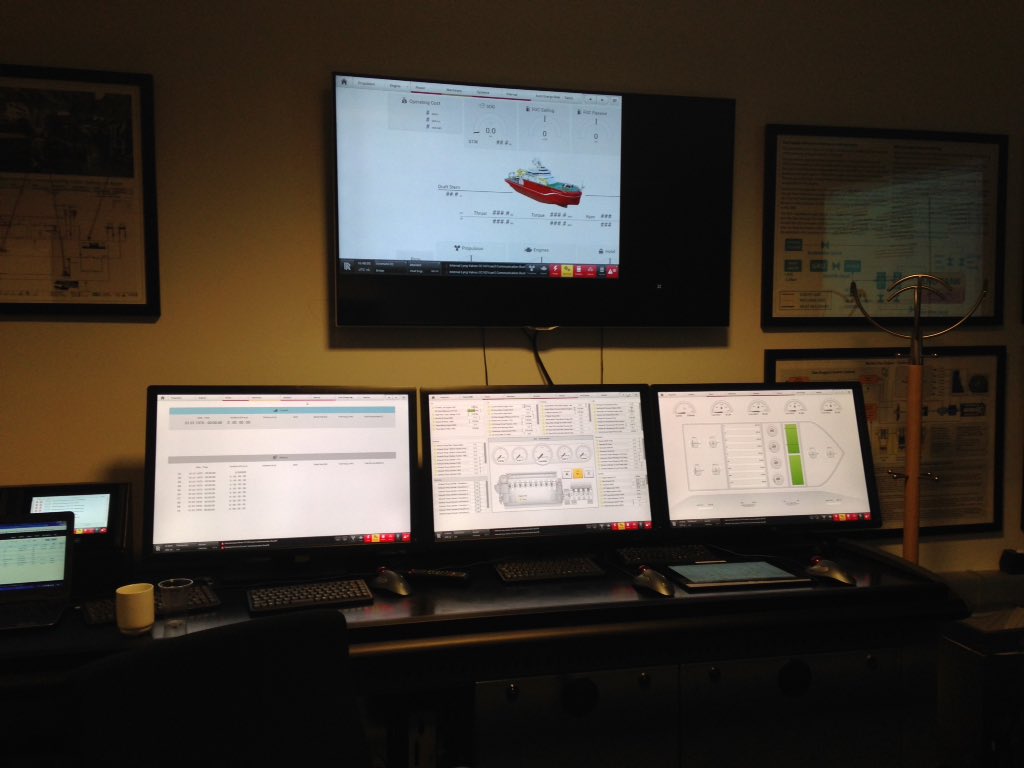Training in Norway
8 November, 2018 RRS Sir David Attenborough
Ship Communication Officer Mike Gloistein gives us an insight into how the crew are preparing for their roles on board the RRS Sir David Attenborough.
When one hears the name Rolls-Royce the chances are that the first thing that comes to mind will be prestigious cars, possibly jet engines and least likely the RRS Sir David Attenborough.
Rolls-Royce have designed the new polar research ship which is currently being built by Cammell Laird. Much of the control and automation that will be used on board is of Rolls-Royce design and will play an important part in the safe operation of the ship.
With this in mind Rolls-Royce have been running technical training courses for the RRS Sir David Attenborough’s Officers at their state of the art training centre in Alesund, Norway. These are important as it means that once the ship is completed and handed over to British Antarctic Survey, the Officers will be familiar with what is on board.
Recently I spent a few weeks at the training centre to learn about the Dynamic Positioning System and motor drive systems. These courses provided both operational and maintenance training.
The 360 degree Dynamic Positioning System simulator – pictured above – has been extensively tested by the Deck Officers. Having the opportunity to try out all the functions of the system, gives them a clear idea of how the system works and understand how the ship is affected when operating in Dynamic Positioning mode. One advantage for those of us who will be maintaining the equipment is that we get the chance to ‘drive’ the ship, something that would never happen at sea!

The Engineers spent time working with the control systems at the training centre. Facilities include a classroom where staff learnt about the Automation Control System on board the ship. Using this system much of the machinery can be monitored and controlled along with monitoring of all engine alarms.

The training centre also has a very good workshop with a lot of equipment installed that can be used for demonstration and fault finding. There is a switchboard in the workshop, which is used to drive a large electric motor. This simulates equipment such as the thrusters and propulsion motor, along with other items, for example large pumps and machinery, as fitted to the RRS Sir David Attenborough. Following time in the classroom, learning the technical details, time can then be spent getting hands on experience.

Not all of the training has been in Norway. A number of Officers and Crew, who will be involved in helicopter operations, have been attending specialist training in the UK. This will mean that once the SDA is fully operational helicopter operations can be carried out safely.
Training will not stop once the vessel is ready for sea. On board training will be carried out through the life of the vessel, much of this being ‘Safety of Life at Sea’ to ensure that when the ship is far from assistance those on board are able to deal with any emergencies that might arise.